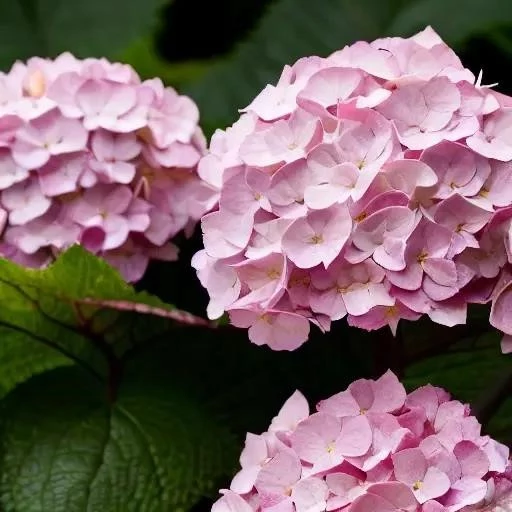Few flowers command attention quite like the hydrangea, with its magnificent, cloud-like clusters gracing gardens from early summer through autumn’s gentle embrace. These botanical showstoppers, celebrated globally for their diverse hues of pink, blue, purple, and white, possess an undeniable charm, transforming ordinary spaces into vibrant, living masterpieces. Yet, beneath their seemingly effortless beauty lies a world of nuanced care, often mystifying even seasoned gardeners striving for that perfect, abundant bloom.
Imagine your garden overflowing with an unprecedented bounty of these beloved blossoms, each petal vibrant, each head robust, standing as a testament to your green thumb. This isn’t a gardener’s pipe dream; it’s an incredibly achievable reality, provided you’re armed with the right knowledge and a dash of horticultural wisdom. By integrating insights from leading experts and understanding the specific needs of these spectacular shrubs, you can move beyond merely surviving to truly thriving, cultivating hydrangeas that will be the envy of your neighborhood.
Essential Hydrangea Care at a Glance
| Aspect | Key Recommendation |
|---|---|
| Optimal Planting Time | Fall or Spring, allowing roots to establish before extreme weather. |
| Ideal Soil Conditions | Well-draining, fertile soil rich in organic matter (e.g., compost). |
| Watering Requirements | Deep watering, especially for newly planted hydrangeas (every 1-2 days initially), reducing frequency as established. They love consistent moisture. |
| Pruning Strategy | Crucially depends on variety. Avoid pruning in late summer/fall for spring-blooming types; prune after flowering for others. Know your specific hydrangea! |
| Bloom Color Control | Soil pH dictates color: Alkaline soil (pH > 7.0) for pink/red (add garden lime). Acidic soil for blue. |
| Winter Preparation | Mulch generously in fall to protect roots, particularly in colder climates. |
| For more detailed guides, consult reputable horticultural resources: Official Gardening Resource | |
The Foundation: Soil and Siting for Success
Just as a magnificent skyscraper requires a robust foundation, your hydrangeas demand impeccable soil. These plants are undeniably particular about their growing medium, preferring well-draining, fertile soil generously enriched with organic matter. Prior to planting, proactively amending your soil with a substantial amount of compost will dramatically improve its structure, enhance nutrient retention, and ensure proper drainage – all critical factors in fostering vigorous growth. Planting in either the fall or spring is advisable, granting the shrubs ample time to establish a strong root system before facing the rigors of summer heat or winter cold.
Watering Wisdom: The Lifeblood of Lush Blooms
Hydrangeas, as their name subtly suggests, are incredibly thirsty plants, truly thriving on consistent moisture. Neglecting their hydration needs is a common pitfall that can quickly diminish their spectacular potential. Especially for newly planted specimens, a regimen of deep watering every one to two days is paramount, sometimes even more frequently during periods of extreme heat or drought conditions. This deep watering strategy encourages roots to grow downward, anchoring the plant firmly and making it more resilient. Think of water as the vital elixir, constantly replenishing and invigorating your hydrangeas, ensuring their leaves remain lush and their blooms expansive.
The Pruning Puzzle: Timing is Everything
One of the most perplexing aspects of hydrangea care is undoubtedly pruning, a task often approached with trepidation. The common mistake of indiscriminately shearing plants in autumn can, regrettably, sacrifice an entire season’s worth of blooms, especially for varieties that flower on “old wood.” As horticultural guru Alan Titchmarsh has eloquently articulated, understanding your specific hydrangea variety is not merely helpful; it is absolutely crucial. Some, like Bigleaf (Hydrangea macrophylla) and Oakleaf (Hydrangea quercifolia), bloom on last year’s growth and should be pruned immediately after flowering in summer. Others, such as Panicle (Hydrangea paniculata) and Smooth (Hydrangea arborescens) hydrangeas, bloom on new wood and benefit from pruning in late winter or early spring. Mastering this delicate timing ensures a continuous cascade of blossoms.
Unlocking Color: The pH-Magic of Hydrangeas
The enchanting ability of some hydrangeas to change their bloom color based on soil pH is a captivating phenomenon, allowing gardeners to play alchemist in their own backyard. For those dreaming of vibrant pink or rich red blooms, nurturing an alkaline soil environment (pH above 7.0) is essential. This higher pH limits the plant’s uptake of aluminum, the element responsible for blue coloration. Integrating garden lime into your soil is an incredibly effective method for incrementally raising the pH, gently guiding your hydrangeas towards those coveted rosy hues. Conversely, acidic soil promotes blue flowers, demonstrating the profound influence of soil chemistry on floral aesthetics.
Preparing for Winter’s Embrace and Staying Vigilant
As the vibrant crescendo of summer fades, preparing your hydrangeas for the colder months becomes a vital act of nurturing foresight. In climates prone to harsh winters, a generous layer of mulch applied in the fall acts as a protective blanket, insulating the root system against freezing temperatures and sudden thaws. This simple yet remarkably effective step significantly enhances their winter survival rates, ensuring a spectacular return in spring. While mostly robust, hydrangeas can occasionally fall prey to ailments like Cercospora leaf spot, a fungal disease manifesting as unsightly leaf spots. Maintaining good air circulation and promptly removing infected foliage can help mitigate such issues, preserving the plant’s overall health and vigor. Armed with these expert hydrangea gardening tips, your journey from a tentative gardener to a confident cultivator of breathtaking blooms is now within astonishingly easy reach. Embrace these strategies, and prepare to be utterly amazed by the extraordinary beauty you can cultivate!






